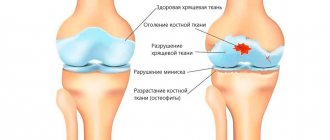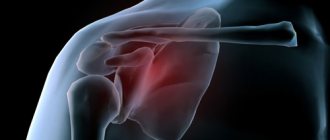Numbness is an abnormal sensation that can occur in any part of the body, but is most often felt in the arms and legs. The symptom of numbness is often accompanied by tingling, and can be quite harmless, for example, in the hands when cooling, to a sign of a serious, life-threatening condition. Numbness is a fairly common symptom. Numbness of the limbs is often accompanied by an emotional context with a feeling of detachment and decreased emotional coloring, which is usually a sign of depression. In a physical context, numbness is usually the result of damage, poor circulation, or pathological changes to certain nerves.
In addition, there may be periodic attacks of numbness and tingling due to the presence of certain health problems, such as neuroses or a migraine attack. Also, episodes of numbness can occur during attacks of fear caused by the anticipation of life-threatening events, and in such cases the numbness is caused by shallow breathing and most often affects the fingers and the mouth area.
Numbness of the hands is manifested by a feeling of loss of sensation in the hands; patients often call this condition “asleep” hands. Numbness may be accompanied by a tingling sensation from the needle. Often such numbness occurs after sleeping with your hands under your head. Numbness in the hands is usually caused by carpal tunnel syndrome, which causes compression of the median nerve. Most often, carpal tunnel syndrome is caused by compression of the nerve in the carpal tunnel. In addition, numbness in the hands can be caused by injuries, hypothermia, or systemic diseases such as diabetes. If numbness of the hands is accompanied by shortness of breath, nausea, and palpitations, then this may be a sign of acute, life-threatening conditions and requires emergency medical attention.
Numbness in the legs is a loss of feeling or sensation in the legs, resulting from disruption of communication between the peripheral nerves and the central nervous system. Typically, numbness in the legs is associated with poor circulation in the lower extremities. This numbness most often occurs when sitting cross-legged for a long period of time. In such cases, getting up and walking can relieve the numbness after a while. But numbness in the legs can also be a sign of serious damage to nerve fibers due to mechanical factors (disc herniation, radiculopathy) or nerve damage due to somatic diseases.
What happens when your hands become numb?
Hand numbness is associated with loss of sensation in one or both limbs. It covers the entire hand, moving onto the tissues of the hands and fingers. Numbness should not be confused with paralysis, which results in the arm not moving. In a paralyzed person, sensation may be lost or partially preserved.
Along with numbness, the patient feels a tingling or burning sensation in the affected area. These sensations are called parasthesias. More often than not, they precede the fact that your hands feel numb at night or at the moment of waking up. Unpleasant sensations quickly pass if caused by external causes associated with a decrease in air temperature. The sudden appearance of parasthesias and their slow progression are noted.
Chronic conditions are associated with some degree of nerve damage. Therefore, the hand goes numb during sleep. And, if this process occurs every night, you need to urgently consult a doctor. Seek medical help if accompanied by numbness, confusion of consciousness, speech, or weakness in the affected arm.
Sometimes parasthesias are combined with the appearance of pain radiating to the shoulder, dizziness, and increased blood pressure.
Treatment with folk remedies
The following recipes help with numb hands:
- as a compress or therapeutic bath, use a mixture of 2 liters of milk, 600 g of salt and 50 g of honey, heated to 60? C;
- apply an infusion of wild rosemary with apple cider vinegar (1:3) 3 times a day;
- infusion of garlic (several cloves) in vodka (400 ml) taken orally, 3-5 drops dissolved in water;
- for 1 liter of vegetable oil - 100 g of ground black pepper, cook for 30–40 minutes, rub the cooled product into the skin of the affected limb.
External reasons
It’s good if your hands go numb during sleep due to unstable air temperature in the bedroom. Once this situation is corrected, the sensations will disappear. Parasthesia may occur due to the fact that the pillow or bed is chosen incorrectly or the person suffers from bad habits.
High headboard
Getting carried away by dense pillows when your head lies high, you can get a deflection in the cervical spine. This situation leads to the fact that the roots of the nerve endings passing along the spinal cord are poorly supplied with nutrition. In the areas of the spine responsible for sensitivity and mobility of the limbs, blood flow worsens.
To get rid of cramps, replace the pillow with an orthopedic version or place a cushion under the neck. Sleep items are made taking into account the anatomical features of the head and neck. Thanks to this, blood flows evenly to all parts of the spinal column.
Body position
Your sleeping position is important so that your hands do not lose sensitivity in the morning. When a person sleeps on his side, he lies on his hand, pinching the vessels in it. The blood begins to stagnate, leaving the hand and fingers without nutrition. The heart works slowly at night, so it is unable to deliver blood to hard-to-reach areas of the body.
Loss of sensitivity is caused by throwing your arms behind your head while lying on your back. Tight pajamas, nightgowns with long sleeves, when tight seams squeeze the blood vessels in the arms, contribute to the swelling of the limbs.
Control of body position is difficult to achieve at night. But you need to accustom yourself to the correct sleeping position so that all parts of the spine are in a straight line. Sleepwear is chosen from breathable natural materials. Women are advised to remove all jewelry from their fingers and wrists to avoid squeezing blood vessels.
The median nerve may be pinched by tight cuffs
Lifestyle
Evening consumption of coffee, strong tea, and alcoholic beverages leads to the fact that a person sleeps poorly. After all, at first the vessels are dilated, but at night they sharply narrow. Hence the occurrence of headaches and intestinal disorders. Starting to toss and turn in their sleep, people take an unnatural position, which is why their hands begin to go numb.
Hands cramp if:
- work at the computer for a long time;
- lead a passive lifestyle;
- physically load the spine during training and hard work;
- Raise their hands up during professional activities throughout the entire shift (installers, painters).
The nerves in the limbs are temporarily compressed when they draw or write for a long time.
Complications and consequences of numbness in the legs
The consequences of numbness in the legs are very diverse, leading to a wide range of complications. They depend on the cause that led to the malaise. The main thing that the patient needs to understand is that the presence of frequent numbness is not the norm, this is a very dangerous symptom that requires immediate consultation with a doctor. Timely examination will help protect against serious consequences.
Complications preceded by numbness of the legs:
- loss of tissue sensitivity, partial or complete;
- loss of limb mobility;
- dysfunction of the pelvic organs;
- leg deformity;
- gangrene;
- necrotization of intervertebral hernia.
Diseases that cause numbness
Diseases that develop in people throughout life are a common cause of numb and tingling fingers. It is imperative to identify incipient pathology in order to prevent serious health problems. Paresthesia may be a signal of impending disease.
Carpal tunnel syndrome
After 40 years, women whose work involves tension in the tendons and joints of the hands feel tingling sensations in the wrist area at the end of the day. The skin in this place itches, goosebumps run across it. The syndrome occurs due to pinching and swelling of the nerve that passes through the carpal tunnel.
From there they control the movements of the palm, fingers, and their sensitivity. First, the syndrome affects the little fingers, then the entire palm. When the pathology spreads and is neglected, the death of nerve tissue occurs. Then sensitivity in the affected area is completely lost. As a result, a person becomes unable to use even a spoon or pen.
Pathological changes in the spine
As a result of orthopedic pathologies, damage and destruction of nerve tissue occurs. The causes of the conditions are related to:
- degenerative processes in the intervertebral discs of the cervical spine (spondylosis);
- hernias caused by a rupture of the outer shell of the disc;
- a pinched nerve in the arm at night;
- osteoporosis.
The consequence of the injury may be what the hands endure. Then the patient will complain not only of numbness, but also headaches and dizziness.
Vascular disorders
Poor condition of blood vessels and disturbances in their structure contribute to numbness in the hands at night. Insufficient blood flow to the extremities is associated with diseases:
- The congenital pathological connection between arteries and veins leads to the fact that the vessels are tangled into a ball. Arteriovenous malformation is the reason why areas of the upper extremities become numb.
- Thrombosis is the formation of blood clots that block passages in blood vessels. Pathology can occur as a result of acute inflammation of the arteries, veins, and poor lifestyle.
- The density of fat and cholesterol deposits on the walls of blood vessels leads to a narrowing of the peripheral arteries. Therefore, blood flow to the hands and fingers is limited.
- With frostbite and a decrease in air temperature in the room, parasthesia of the upper extremities is observed.
- In patients suffering from ischemic stroke, cerebrovascular accident, not only do their hands numb, but their consciousness becomes foggy, they become dizzy, and their blood pressure levels rise sharply.
If even one hand is numb for a long time, you need to contact a specialist. This could be a sign of a stroke or heart attack.
Neurological pathologies
Numbness of the hands at night and after sleep appears in people who are chronic alcoholics and diabetics. Patients with systemic lupus erythematosus have problems with loss of sensation in their hands as the body attacks its own tissues and cells. Limbs go numb when heavy metal poisoning occurs, injuries are sustained, and spinal tumors occur.
Carpal tunnel syndrome is one of the causes of hand numbness
The cause of malignant anemia is insufficient vitamin B12 in the body, hence the loss of sensitivity. Paresthesia that appears as a result of diseases does not go away quickly. This is worth paying attention to. Urgent help is required if sensitivity is lost for an hour and you cannot bend your fingers.
Symptoms of rheumatoid arthritis
What causes the legs to become paralyzed? For many, this symptom comes as an unpleasant surprise. People often ask: my leg is numb - what could it be? Sometimes the cause is rheumatoid arthritis. Moreover, the disease itself only deforms the joints, but deformed joints already pinch the nerves, which leads to the symptoms described. In any case, appropriate treatment is required.
When visiting a doctor, it is important to clarify that numbness is occurring. In this case, the necessary medications will be prescribed to help cope with the problem. Because this symptom is only accompanying. It does not always occur, and treatment is prescribed only for the underlying disease.
The influence of bad habits
Bad habits such as drinking alcohol and smoking can lead to numbness in the legs. Moreover, alcohol affects the condition of nerve endings: with severe abuse, alcoholic neuropathy occurs over time. Peripheral nerves are affected, and negative symptoms may not go away at all.
Smoking first affects small vessels, narrowing them, reducing blood flow. However, over time, the habit begins to affect the nerve endings, which also leads to corresponding symptoms. If the situation is under control, then it is enough to give up bad habits to part with unpleasant symptoms. But in advanced cases, drug therapy will be required.
Poisoning with various substances
You can be poisoned by heavy metals, chemical compounds and even medicines and drugs. One of the consequences will be toxic neuropathy. It is characterized by damage to nerve endings and loss of sensation in the limbs. Arsenic, mercury and other industrial poisons lead to the destruction of peripheral nerves. The scale of the problem can only be assessed with a thorough diagnosis in the clinic. Moreover, numbness of the limbs is only one of the symptoms, and not the worst.
What to do if a symptom appears
Most people know why their legs go numb when they sit in an uncomfortable position for too long. They do not have problems if unpleasant sensations appear only in such situations. But sometimes symptoms are observed without objective external causes. Just doing housework, sitting in the office, walking, you can find that:
- legs went numb;
- I can’t feel my feet;
- it seems that the legs have become heavy;
- no sensitivity in fingers;
- legs are swollen, numb, there is a feeling of pain;
- The calf muscle of my left leg goes numb every day.
This is scary and raises many questions, the answers to which are almost impossible to find on your own. On the Internet, users are interested in what helps with numbness in their legs; they are recommended various ointments and folk remedies. But you cannot solve a problem without knowing its true cause. This is how they try to get rid of the symptoms without eliminating the disease itself.
It is possible to understand why your legs quickly go numb when walking or sitting, only after tests. Of course, first you need to take those that can indicate obvious and most common disorders. This way, the specialist will gradually be able to find the cause of the problem.
The harm of self-medication
Today, not only older people, but also young people self-medicate. It has become the norm to purchase various ointments that relieve discomfort. This is due to the fact that this method of therapy is widely advertised. Why get treatment or visit a doctor when, if you feel unwell, you can simply apply a cream or gel that relieves all the symptoms?
The negative consequences of such a decision are associated with the fact that the patient triggers the disease. As a result, doctors have to deal with the problem at a stage when just physical therapy and pills are no longer useful.
In pregnant women
During the period of bearing a child, a woman’s hands often become numb at night. The pregnant woman's body is focused on ensuring that the embryo develops normally. Therefore, a pregnant woman experiences difficulties due to the restructuring of the work of all organs and systems. Her metabolic processes are disrupted. Lack of vitamins and microelements leads to cardiac dysfunction. Most women are diagnosed with anemia.
Pregnant women rarely sleep fully, especially in the last stages before childbirth. It is difficult to assume a natural sleeping position due to a large belly. The consequences of stress and nervous strain are disturbances in the functioning of peripheral arteries.
Numbness of the leg on the outside
This pathology has a special medical name - paresthesia, and is of a tumor, infectious, neurodegenerative or autoimmune nature. Accompanied by tingling, burning, and pain of varying intensity.
The sensations can be short-lived or long-lasting, of a paroxysmal nature. The most dangerous are long-term sensory disturbances, the cause of which is the course of chronic pathologies: arthritis, osteochondrosis, diabetes and others. Violations of cellular metabolism lead to persistent disruption of nerve impulse conduction.
When one hand goes numb
A feature of parasthesia of the extremities is that both arms or only one may become numb. It happens that in the morning the sensitivity of several fingers is lost. When your right hand suffers at night, you need to pay attention to the sleeping position. By squeezing your hand with your body, the blood vessels are compressed, and tissue nutrition is stopped.
A leak occurs on the right side if the inflammation covers the cervical spine. After arm fractures, disturbances occur in the structure of blood vessels and tendons. This is why numbness occurs in the hands. Long-term loss of sensitivity, when the left side suffers, indicates developing or current heart disease.
Before an attack of angina pectoris, the hand and forearm become numb. You should call an ambulance if numbness begins on the entire left side of the body. This is a symptom of a stroke. An impending heart attack will be accompanied by severe pain in the heart area. Creeping and burning indicate atherosclerosis of the left brachial artery. With thrombosis, the affected area loses sensitivity, is very painful, and swells.
Numbness of the leg below the knee
This part of the limb is extremely vulnerable to disorders of the blood vessels and nerve roots. A passive lifestyle and sedentary work can cause pathology. Vascular problems additionally give a burning sensation, loss of sensitivity, cold feet, tingling of the numb area.
Numbness of the right leg is one of the most important signals of sciatic nerve neuropathy, the cause of which is a hernial formation. The symptom intensifies when walking or sitting, and is often accompanied by convulsions.
The same pathologies on the left leg indicate left-sided protrusion of the intervertebral disc. Accompanied by piercing, unexpected pain.
Who to contact
Before going to the clinic, you should rule out all external causes of numbness. To do this, create conditions for a comfortable sleep: change the pillow and mattress, buy comfortable pajamas. If unpleasant signs do not disappear, then you need to consult a therapist. Blood tests will reveal the presence of high cholesterol. An electrocardiogram will show changes in the functioning of the heart.
You'll have to visit a neurologist's office. In addition to checking sensitivity, the doctor will examine an x-ray of the spine. In some cases, it is necessary to do a computed tomography scan of the cervical spine. Only on the basis of tests and examinations can an accurate diagnosis be made and treatment prescribed.
Why do my hands go numb?
If your arms and legs go numb on one side, then most likely the cause is a stroke, transient ischemic attack, brain tumor or multiple sclerosis.
With a stroke, there are other symptoms: facial asymmetry, speech impairment, numbness of the limbs, muscle weakness. If you experience any of the above symptoms, you should immediately call an ambulance.
In a transient ischemic attack (TIA), a blood clot blocks a blood vessel in the brain for several minutes. This happens if the lumen is too narrow due to cholesterol plaques (atherosclerosis). Attacks occur regularly and are manifested by numbness of the arm, leg and/or face (mainly on one side), weakness, dizziness, double vision, and slow speech. The symptom complex depends on which vessel is affected.
Statistically, a third of people with a TIA will have a stroke, so such patients should definitely see a doctor to reduce their risks.
With multiple sclerosis, numbness of the face, limbs, and individual parts of the body is often the first symptom. Numbness can vary in strength, but sometimes it makes it significantly difficult to move an arm, leg, etc. There are no medications that can help cope with this condition. Despite the fact that the symptom may go away on its own, you should definitely seek help from a specialist as soon as possible.
Solutions
Depending on the cause of numbness, treatment of the underlying disease is carried out. Restoration of tissue trophism and resumption of vascular function occurs with the help of physiotherapy. They act on the limbs with ultrasound, electrophoresis, and laser beams. Physical therapy will relieve tissue hypoxia in the hand.
It is necessary to perform gymnastics every day for people in professions that cause tension in the hands and fingers. In the morning, during breaks, in the evening:
- clench and unclench fingers;
- shake with relaxed hands;
- roll a ball or ball between the palms;
- squeeze the massage ball in your hands.
Lifting and lowering the limbs while lying in bed helps restore blood circulation. Manual therapy is effective. Carrying out from 1 to 5 sessions, relieve tension in the cervical and thoracic spine. Acting on certain points of the body, they are relieved of dysfunction of the costovertebral region and shoulder joint.
Diagnosis and treatment
Based on the medical history, study of symptoms and physical examination, the doctor prescribes an examination plan, which includes both instrumental and laboratory examination methods.
To treat numbness, first of all, it is necessary to find out the cause of this symptom. If numbness is associated with circulatory disorders, diabetes or multiple sclerosis, the underlying disease is treated, both with the help of conservative treatment methods and surgical methods (for example, for vascular diseases). For orthopedic problems, such as disc herniation, osteochondrosis, treatment can also be either conservative or surgical (for example, when it is necessary to decompress the nerve root).
Preventing seizures
Preventive measures are aimed at eliminating spontaneous muscle contractions due to malfunctions of the body or the influence of external factors.
- Do not overexert yourself during training and physical work. Stretch your limbs regularly.
- Wear gloves during cold weather.
- If the work involves fine motor skills, then you should take breaks every 45 minutes. While resting, rhythmically clench and unclench your fingers.
- Stop using diuretics and laxatives unless prescribed by your doctor.
- Drink at least 1.5-2 liters of clean water during the day. Tea, juice, coffee, and other drinks are perceived by the body as food, so they cannot quickly replenish the water balance.
Cramps should be treated as an indicator that alerts you to the presence of a disease or abnormality. If attacks recur frequently, then you cannot do without the help of a doctor. Do not self-medicate unless you know the exact cause.
Proper nutrition
Tasty and healthy are two different things, so the diet is often rich in foods that are poor in vitamins and microelements. The problem is especially acute in winter and early spring, which can cause spasms in the hands or other parts of the body.
Since cramps are provoked by a lack of calcium, potassium, magnesium, the following products are introduced into the diet:
- milk;
- natural kefir;
- carrot;
- beets;
- apples;
- dried apricots;
- rice bran;
- nuts (hazelnuts, walnuts, peanuts).
Products that contain a record amount of vitamins:
- A - duck liver;
- B1 - pistachios;
- B2 - pine nuts;
- B3 - beef liver;
- B4 - chicken eggs;
- B6 - pine nuts;
- B8 - sprouted wheat;
- B9 - peanuts;
- B12 - fried beef liver;
- C - rose hips;
- D - mackerel;
- E - wheat germ oil;
- R - lemon zest;
- PP - peanuts.
Eliminate from your diet foods that worsen the condition or remove vitamins and minerals:
- alcohol;
- coffee;
- strong tea;
- cocoa;
- extra dark chocolate.
Nutrition should be complete so that you do not lack proteins or carbohydrates. To do this, regularly consume soups, cereals, as well as fresh vegetables and herbs.









